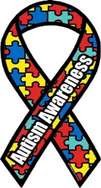Attraction to unusual toys might signal autism
 A research by UC Davis M. I. N. D. Institute has concluded that infants who showed fascination for unusual objects were later diagnosed with autism. Strange though but these children were more likely to spin and rotate; look out of the corners of their eyes at simple objects including a feeder or a rattle as early as 12 months of age.
A research by UC Davis M. I. N. D. Institute has concluded that infants who showed fascination for unusual objects were later diagnosed with autism. Strange though but these children were more likely to spin and rotate; look out of the corners of their eyes at simple objects including a feeder or a rattle as early as 12 months of age.
The study was conducted on 66 babies. 35 babies out of these were considered at high risk for autism as they had an older sibling who was diagnosed with the disorder.
However, the other 31 babies did not have a sibling with autistic disorder.
Researcher Ozonoff said that there is an urgent need to develop measures to identify early signs of autism, before the baby is 24 months. This would help children earlier.
"There is an urgent need to develop measures that can pick up early signs of autism, signs present before 24 months," said M. I. N. D. researcher Sally Ozonoff, first author of the current study, which was published in the October issue of Autism, the journal of the National Autistic Society.
"We hope that earlier intervention, when the brain is in a highly plastic state, will result in greater improvements in function and perhaps help prevent some of the major disabilities that can be associated with autism," Ozonoff said.
These findings could help pediatricians diagnose and treat autism earlier, reducing some of the social and educational challenges associated with the disorder.